질화규소 세라믹 씰링 링 가공의 어려움은 무엇입니까?
실리콘 질화물 세라믹 씰링 링는 최신 고급 기계식 씰의 핵심 구성 요소로서 씰링 분야의 "하드 코어 기술"로 알려져 있습니다. 뛰어난 내마모성, 자체 윤활 특성, 높은 경도, 내식성, 우수한 열 안정성 덕분에 고속, 고온, 강한 부식 등 가혹한 작업 조건에서 기존 금속 씰의 수명이 짧고 쉽게 누출되는 문제점을 완벽하게 해결합니다. 하지만 이러한 뛰어난 특성 때문에 가공이 까다로운 대표적인 소재이기도 합니다.
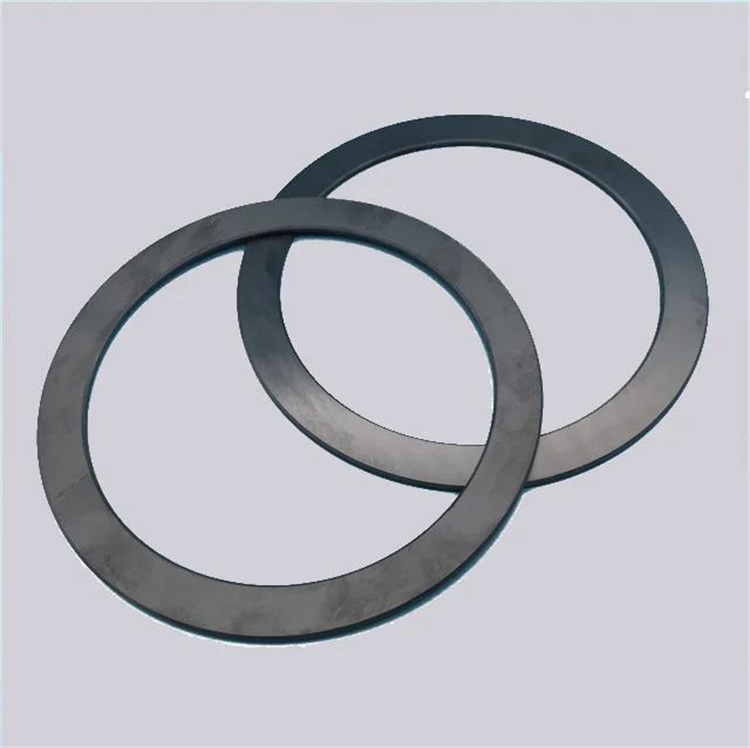
질화규소 세라믹 씰링 링으로 어떤 문제를 해결했나요?
가공의 어려움에 대해 알아보기 전에 먼저 이러한 어려운 재료가 어떤 대가를 치르더라도 사용되는 이유를 이해해야 합니다. 실리콘 질화물 씰링 링은 주로 다음과 같은 주요 문제를 해결합니다:
- 내마모성 및 수명 문제: 기존의 경질 합금 또는 실리콘 카바이드 씰링 링은 고속 펌프, 컴프레서, 화학 공정 펌프와 같은 장비에서 여전히 마모로 인한 문제를 겪습니다. 실리콘 질화물은 경도와 내마모성이 높아 씰링 링의 수명을 두 배로 늘리고 유지보수 중단 횟수를 줄일 수 있습니다.
- 건조한 마찰 및 비상 작업 조건: 실리콘 질화물은 자체 윤활 특성이 우수하고 열충격 저항성이 높습니다. 갑작스러운 단수나 건식 작동과 같은 비상 상황에서는 금속 씰이 즉시 잠기고 타버리는 반면, 실리콘 질화물 씰링 링은 이를 잠시 견딜 수 있어 시스템을 안전하게 종료할 수 있는 소중한 시간을 확보할 수 있습니다.
- 강한 부식성 매체 문제: 강산 및 알칼리와 같은 부식성 매체에서는 대부분의 금속과 일부 탄화규소 소재도 부식됩니다. 실리콘 질화물 세라믹은 화학적 특성이 매우 안정적이며 이러한 환경에서도 오랫동안 안정적으로 작동할 수 있습니다.
- 가볍고 빠른 속도 문제: 질화규소의 밀도는 금속보다 훨씬 낮습니다. 씰링 링으로 만들어지면 회전 부품의 관성이 작아져 장비가 더 빠른 속도와 빠른 응답을 달성하는 동시에 시동 전력 소비를 줄이는 데 유리합니다.
이러한 대체할 수 없는 이점 때문에 처리의 어려움을 극복하는 것이 중요합니다.
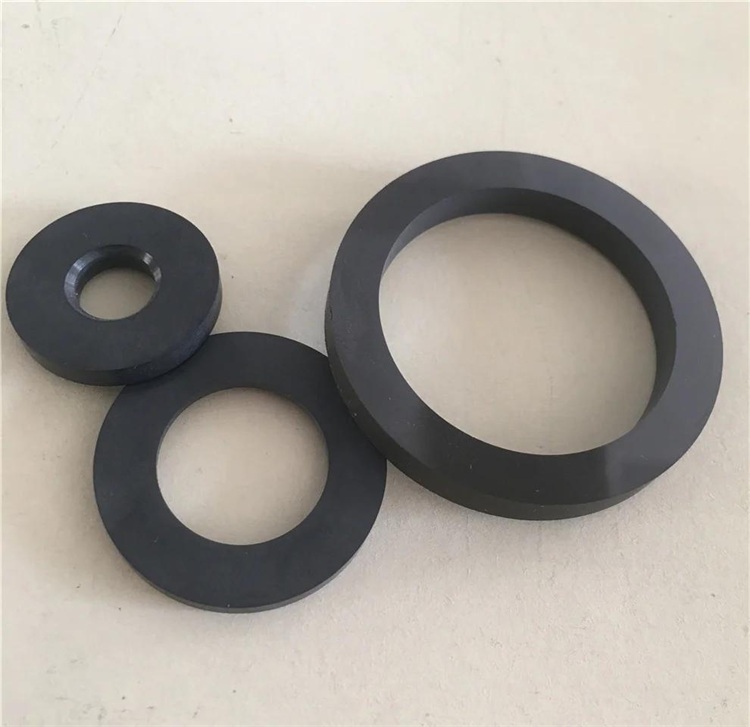
질화규소 세라믹 씰링 링의 핵심 가공 어려움
실리콘 질화물 세라믹 씰링 링의 제조 공정은 주로 분말 준비 → 성형 → 소결 → 정밀 가공의 4단계로 이루어지며, 각 단계마다 많은 어려움이 있습니다.
과제 1: 재료 준비 및 소결 - 완벽한 바디 확보가 전제 조건입니다.
- 분말 순도 및 균일성: 원료 분말의 순도, 입자 크기, 입자 크기 분포는 최종 제품의 성능에 직접적인 영향을 미칩니다. 불순물과 응집체는 제품 내부 결함의 원인이 되어 소결 및 사용 중에 균열을 형성할 수 있습니다.
- 소결 공정은 어렵고 변형과 균열이 발생하기 쉽습니다.
수축 제어: 실리콘 질화물은 소결 과정에서 상당한 부피 수축(보통 15% -20%)을 겪습니다. 수축이 고르지 않으면 빌릿이 뒤틀리고 변형되어 바로 폐기됩니다.
소결 보조제 선택: 순수 실리콘 질화물은 치밀화가 매우 어렵기 때문에 소결 보조제를 첨가해야 합니다. 첨가제의 종류와 비율은 제품의 고온 성능, 내식성, 유전체 특성에 영향을 미칠 수 있으므로 정밀하게 제어해야 합니다.
소결 공정은 까다롭습니다. 일반적으로 고온(1700℃ 이상)과 고압(질소 분위기)에서 진행되는 열간 프레스 소결 또는 압력 소결과 같은 고급 공정이 필요합니다. 가마의 온도 제어 정확도와 대기 균일성이 매우 요구되며, 변동이 발생하면 제품의 배치 결함으로 이어질 수 있습니다.
결과: 이 단계의 목표는 완제품에 가까운 치수, 조밀하고 결함이 없는 내부, 규칙적인 모양을 가진 '블랭크 링'을 얻는 것입니다. 이는 이후의 모든 정밀 가공의 기초가 되며, 블랭크에 결함이 있으면 이후의 가공이 무의미해집니다.
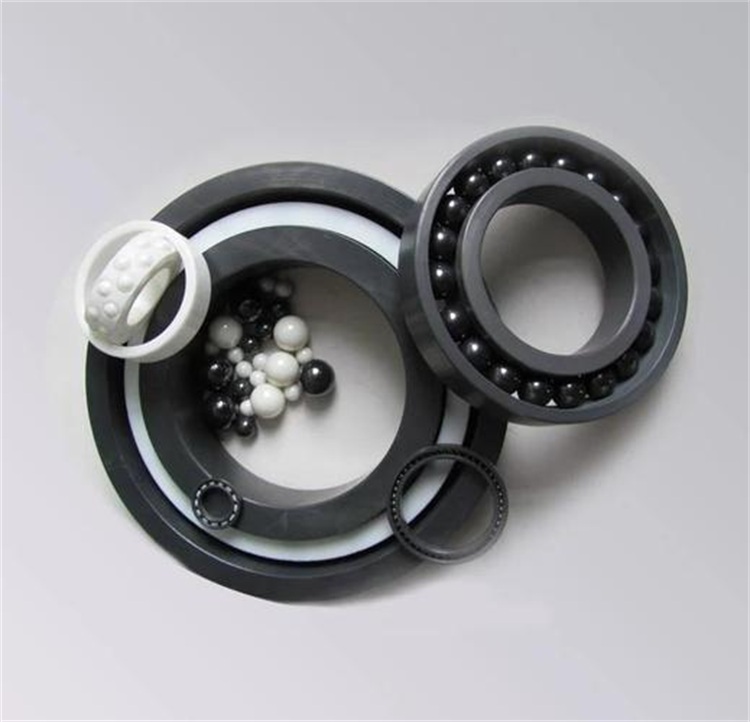
난이도 2: 매우 높은 경도와 취성 - 가공 시 '단단한 뼈'를 의미합니다.
이것은 실리콘 질화물 가공에서 가장 직관적이고 핵심적인 어려움입니다. 경도는 다이아몬드와 입방정 질화 붕소 다음으로 높은 반면 취성이 높아서 다음과 같은 문제가 발생합니다:
- 기존 가공 방법의 실패: 선삭, 밀링, 드릴링, 연삭 등 금속을 가공하는 기존 공구는 질화규소 앞에서 빠르게 마모되어 전혀 절단할 수 없습니다.
- 특수 처리 메커니즘: 질화규소 가공은 본질적으로 금속의 '소성 변형 제거'가 아닌 '취성 파단 제거'입니다. 고경도 연마 입자를 사용하여 재료를 고속으로 미세 분쇄하고 박리해야 합니다. 이를 위해서는 높은 강성과 안정성을 갖춘 가공 장비가 필요합니다.
- 높은 비용의 절삭 공구: 다이아몬드 공구(다이아몬드 연삭 휠, 다이아몬드 드릴 비트, 다이아몬드 연삭 페이스트 등)만 연삭, 연마, 연마에 사용할 수 있습니다. 다이아몬드 공구 자체는 고가이며 마모될 수 있습니다.
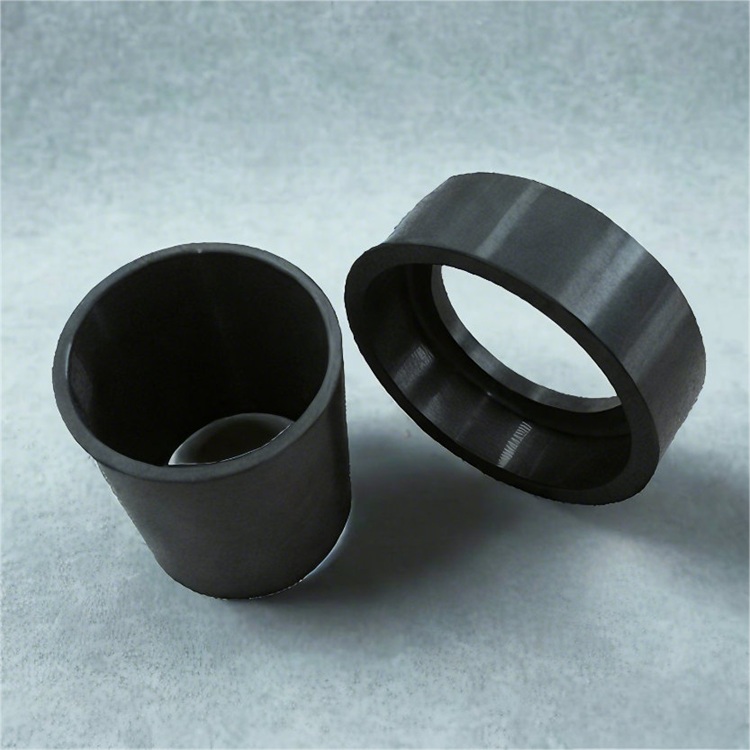
난이도 3: 정밀 치수 및 기하 공차 제어 - 미크론 수준에서의 경쟁
씰링 링의 씰링 효과는 끝면과 내경 및 외경의 평탄도, 평행도, 표면 거칠기, 치수 정확도에 따라 직접적으로 달라집니다. 이러한 허용 오차는 일반적으로 마이크로미터 수준(μm)에서 요구됩니다.
- 연삭 단계 제어: 평면 연삭 및 외경/내경 연삭 시 고경도 소재에서 ± 0.001mm의 치수 공차를 안정적으로 달성하는 방법은 공작 기계 정확도, 고정장치 설계 및 연삭 공정 파라미터에 대한 궁극적인 테스트입니다. 과도한 가공 압력이나 부적절한 장인 정신은 모서리 파손(모서리 손상)을 쉽게 유발할 수 있습니다.
- 변형 및 응력: 소결 후에도 재료 내부에 잔류 응력이 여전히 존재할 수 있습니다. 가공 중에 연삭 열을 부적절하게 제어하거나 재료 제거가 고르지 않으면 새로운 응력이 방출되거나 생성되어 가공 또는 사용 후 제품에 약간의 변형이 발생하고 밀봉 표면이 손상될 수 있습니다.
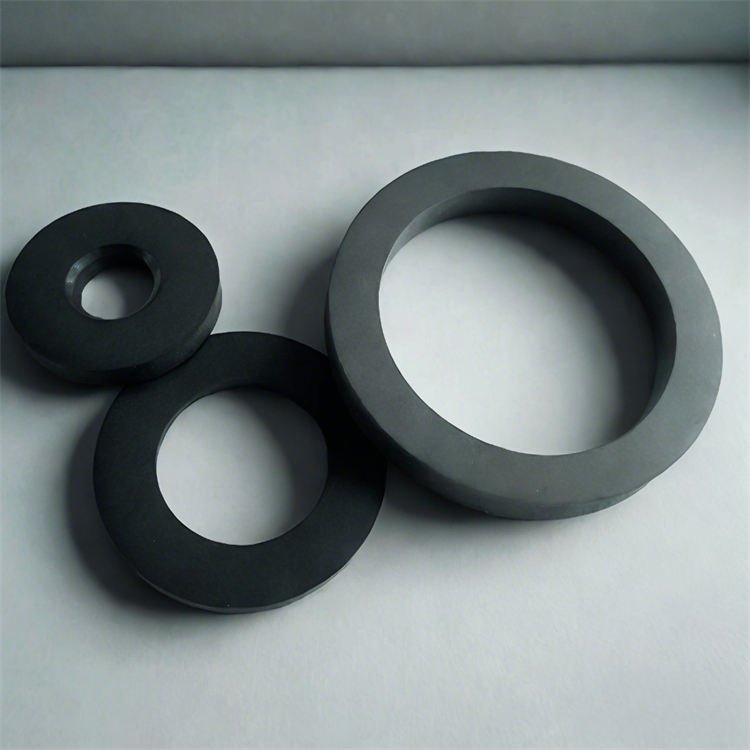
난이도 4: 초정밀 표면 처리(연마) - "거울" 씰링 달성
밀봉 끝면의 표면 거칠기 요구 사항은 유체 동적 압력 효과와 끝면 사이의 장기 밀봉을 달성하기 위해 매우 높습니다(일반적으로 Ra <0.01 μ m 필요). 이는 전체 처리 체인에서 가장 기술적으로 진보된 링크 중 하나입니다.
- 효율성과 품질 사이의 균형: 경도가 매우 높기 때문에 연마 효율이 매우 낮습니다. 효율성을 높이기 위해 압력이나 속도를 높이면 스크래치나 미세 균열과 같은 표면 손상이 쉽게 발생할 수 있습니다.
- 표면 하부 손상을 피하세요: 이러한 보이지 않는 미세 균열은 교대 하중과 중간 압력 하에서 전파되어 궁극적으로 씰링 끝면의 파손 및 고장으로 이어지며, 이는 씰링 링의 조기 고장의 주요 원인 중 하나입니다.
- 공정의 복잡성: 정밀 연마기에서 다양한 입자 크기의 다이아몬드 연마 페이스트를 특수 연마 용액 및 연마 패드와 함께 사용하여 거친 연마부터 미세 연마까지 여러 공정을 거쳐야 합니다. 환경의 청결도, 온도 및 습도에 대한 엄격한 요구 사항이 있습니다.
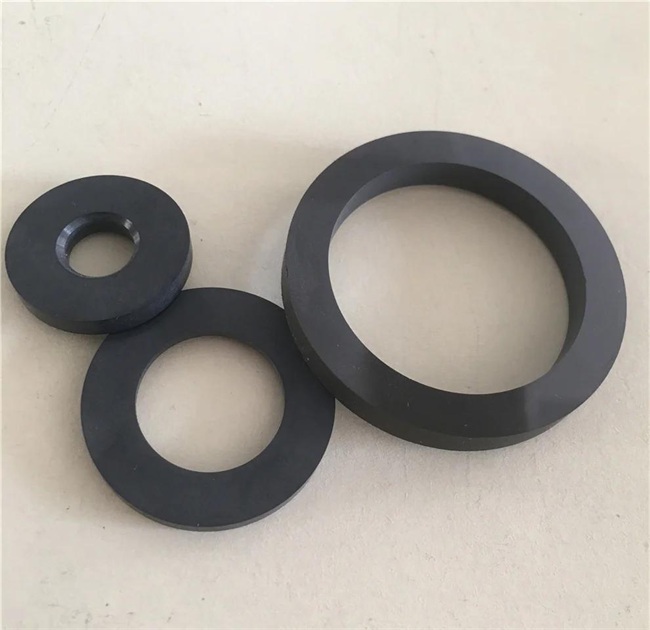
어려움 5: 비용 관리 및 일관성 - 산업화의 주요 시험대
- 높은 전체 비용: 높은 원자재 비용, 긴 소결 주기, 고가의 다이아몬드 공구 마모, 극도로 낮은 처리 효율, 높은 폐품률로 인해 단일 실리콘 질화물 밀봉 링의 최종 비용이 총체적으로 상승합니다.
- 배치 안정성: 각 배치와 각 제품의 성능이 안정적이고 일관되게 유지되도록 하는 것은 대규모 생산에서 반드시 해결해야 하는 과제입니다. 파우더부터 소결까지 모든 공정 단계에 걸쳐 엄격한 공정 제어 시스템을 구축해야 합니다.
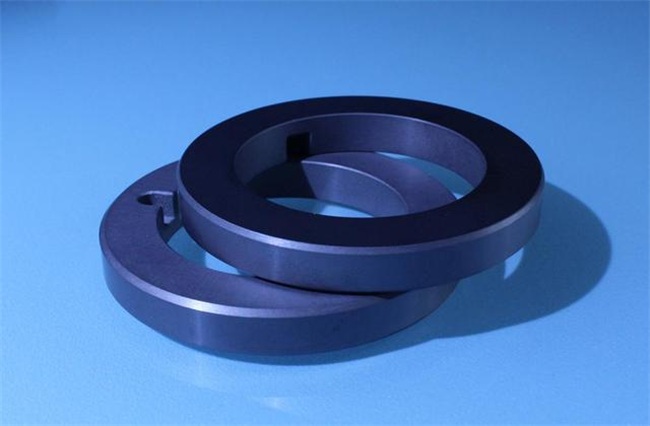
실리콘 질화물 세라믹 씰링 링 가공은 재료 과학, 기계 공학, 공정 제어를 아우르는 종합적인 과제입니다. 제조업체는 질화규소의 재료 특성에 대한 깊은 이해뿐만 아니라 정교한 소결 기술과 초정밀 가공 능력도 갖춰야 합니다. 완벽하게 제공되는 모든 실리콘 질화물 씰링 링은 '고정밀, 높은 일관성, 낮은 비용'이라는 '불가능한 삼각형'의 어려운 균형을 맞춰야 합니다.
수많은 도전에도 불구하고 소결 기술의 발전, CNC 정밀 연삭 및 연마 장비의 개발, 가공 경험의 지속적인 축적으로 질화규소 세라믹 씰링 링의 가공 수율과 효율이 점차 개선되고 있습니다. 장비 신뢰성 향상, 유지 보수 비용 절감 및 포괄적 인 경제적 이점으로 인해 고급 산업 분야에서 점점 더 광범위하고 대체 할 수없는 응용 분야가되었습니다. 이러한 어려움을 극복하는 것은 하이엔드 장비 제조 산업의 발전을 촉진하는 핵심 단계입니다.
브루드세 세라믹 는 알루미나 세라믹, 지르코니아 세라믹, 질화 규소 세라믹, 질화 알루미늄 세라믹, 실리콘 카바이드 세라믹, 탄화 붕소 세라믹, 바이오 세라믹, 기계 가공 가능 세라믹 등 다양한 고품질 석영 유리를 공급 및 판매합니다. 다양한 세라믹 제품의 맞춤형 요구 사항을 충족할 수 있습니다.
태그: 탄화붕소 세라믹, 실리콘 질화물 세라믹 씰링 링
